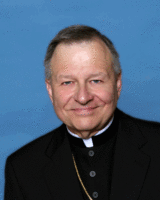Features
1 November 2012
 Vatican II produced 16 documents over the course of four sessions, it introduced major reforms and stands among the most significant religious events of the 20th Century.
Vatican II produced 16 documents over the course of four sessions, it introduced major reforms and stands among the most significant religious events of the 20th Century.
To honour this anniversary, Archbishop Gregory Aymond of New Orleans, chairman of the US Bishops’ Committee on Divine Worship, has offered ‘10 Ways Vatican II Shapes the Church Today’, reports the Independent Catholic News.
A fresh look
1. Vatican II presented a renewed vision of what it means to be the Church. The Council document Lumen Gentium on the nature of the Church called the Church a light for the world and the source of salvation.
The document Gaudium et Spes on the Church in the modern world said the Church shares the joys and sufferings of the world.
Both documents refer to the Church as the People of God, reflecting a new appreciation of lay people that surfaced repeatedly at the Council.
2. It called the Eucharist the source and summit of the faith. The Council’s document on the liturgy, Sacrosanctum Concilium, describes Holy Communion as the main source of God’s grace for Catholics.
In the Eucharist, Catholics encounter the person of Christ. In this way, it is truly the foundation of the Church.
Language reform
3. It reformed the liturgy. The changes to the Mass, perhaps the best known conciliar reform, promoted ‘full and active participation’ which led to the Mass being translated into the vernacular, or local language, and celebrated as a dialogue between the celebrant and the congregation.
All called to evangelise
4. It said every Catholic is called to holiness and to be a missionary. The document on missionary activity, Ad Gentes, expanded the view of how the Church evangelises.
Missionaries were no longer sent just to remote areas of the world to spread the Good News; now all Catholics play a role in evangelising through their lives.
5. It emphasised the importance of the family. According to Lumen Gentium, the family is the ‘Domestic Church’.
The faith of the Church flourishes in parishes, dioceses and nations around the world, but before all else is the family. It is the family that provides a strong foundation for each believer.
6. It reshaped the Church’s relationship with other Christians and other religions. At Vatican II, the Church adopted a spirit of respect and dialogue toward other faith traditions.
Ensuing dialogues have built bridges of understanding and strengthened relationships with Orthodox Christians, Jews, Muslims, Protestants and others.
7. It promoted collaboration. The document Christus Dominus encouraged ‘collegiality’ within the Church.
Bishops, priests, religious and lay people all work together in a way that didn’t occur in the past. Bishops collaborate through episcopal conferences like the New Zealand Catholic Bishops Conference.
The Council also encouraged ‘subsidiarity’, by which authority is divided up and decisions are made at the appropriate level.
8. It updated the Church… John XXIII saw Vatican II as a chance for renewal in the face of the ‘signs of the times’ and said he called the Council to open a window and let in fresh air.
This resulted in reforms that made the Church more accessible to the modern world, such as Mass in the vernacular and dialogue with other believers, and the openness of the Council was reflected in the presence of men and women religious, lay people and even non-Catholics among its official observers.
9. …but it also returned the Church to its roots taking a back-to-basics approach to reform. This meant renewed appreciation for scripture, the Church Fathers and the restoration of ancient traditions such as the permanent diaconate and the multi-step process for adults joining the Church.
10. Then-Father Joseph Ratzinger (now Pope Benedict XVI) played a significant behind-the-scenes role.
The bishops at Vatican II were assisted by brilliant theologians. These assistants, or periti, included Joseph Ratzinger, who assisted Cardinal Josef Frings of Cologne, Germany.
Father Ratzinger helped draft speeches, shape documents and define the overall trajectory of the Council.